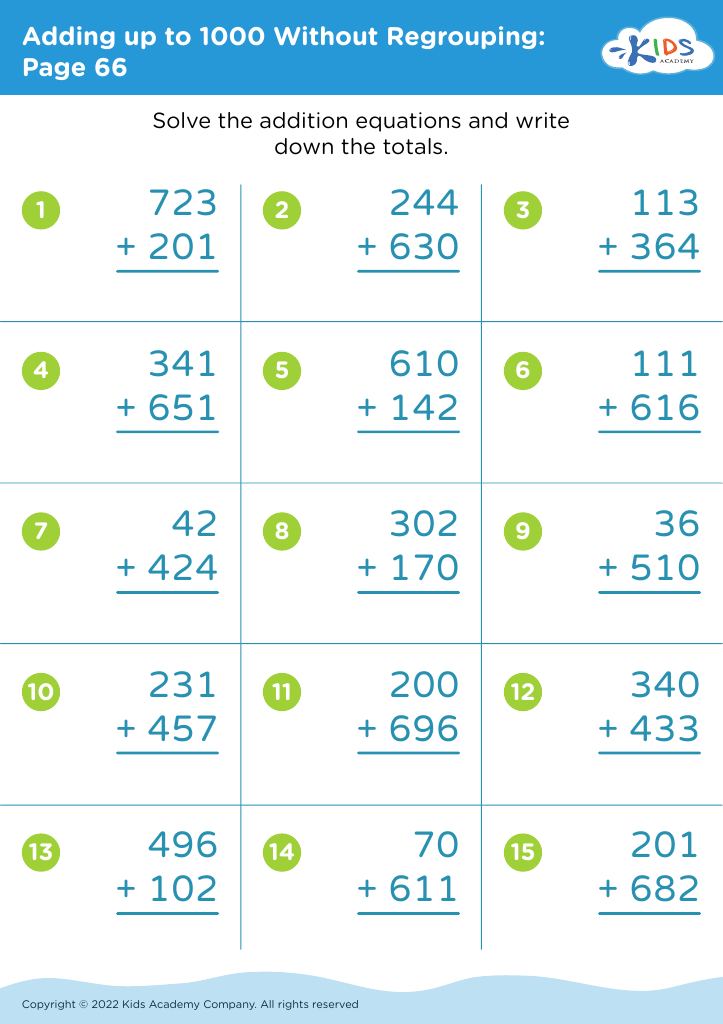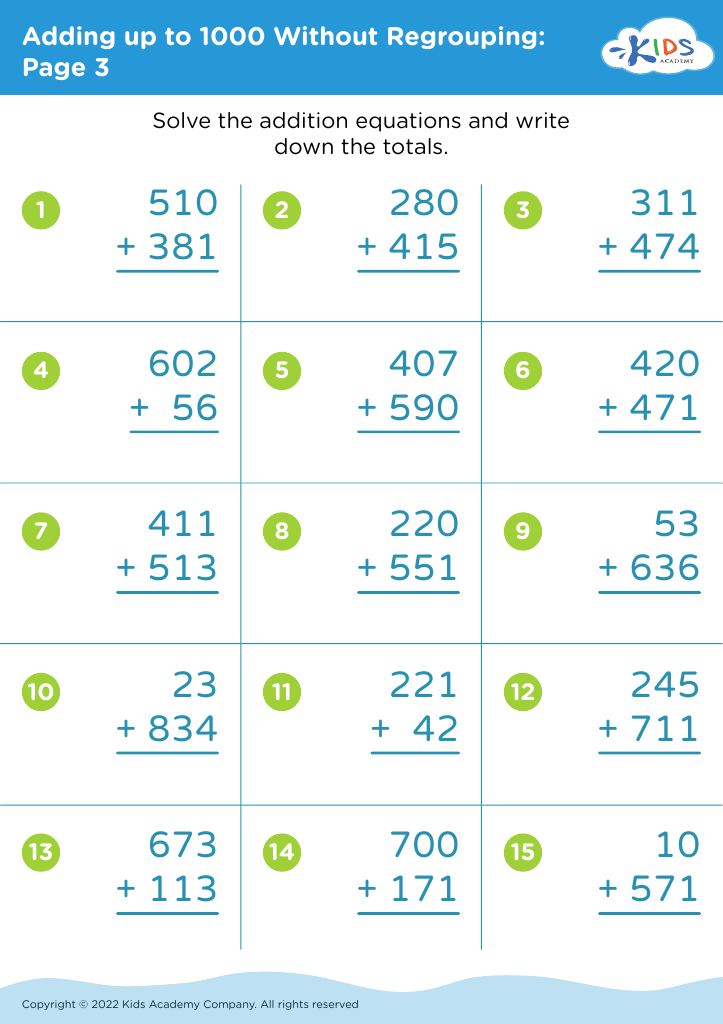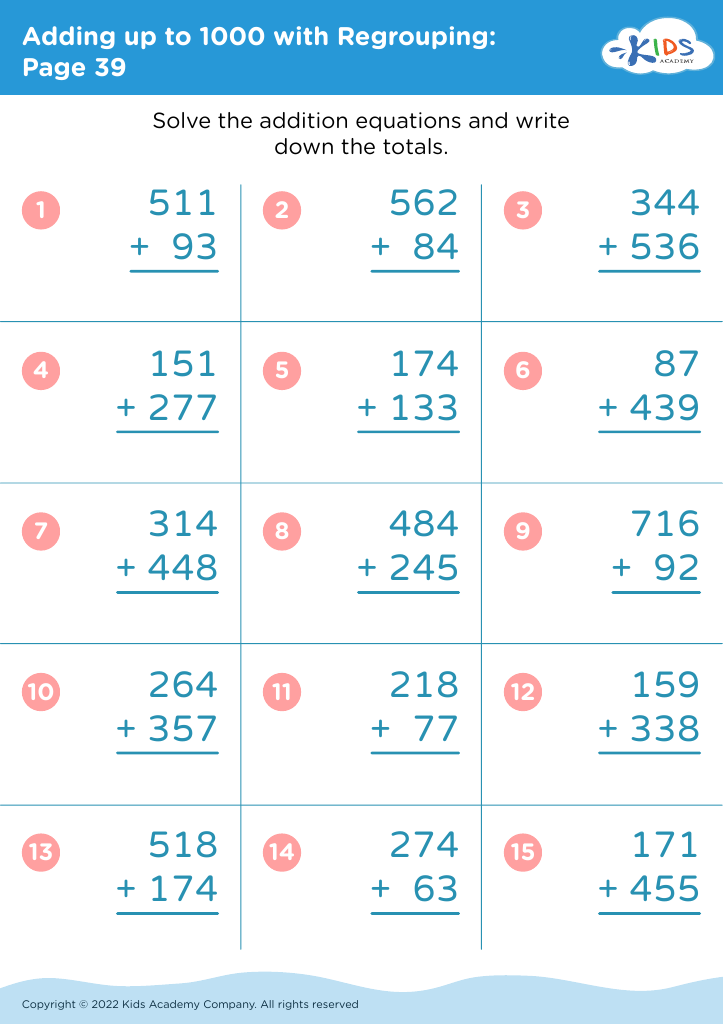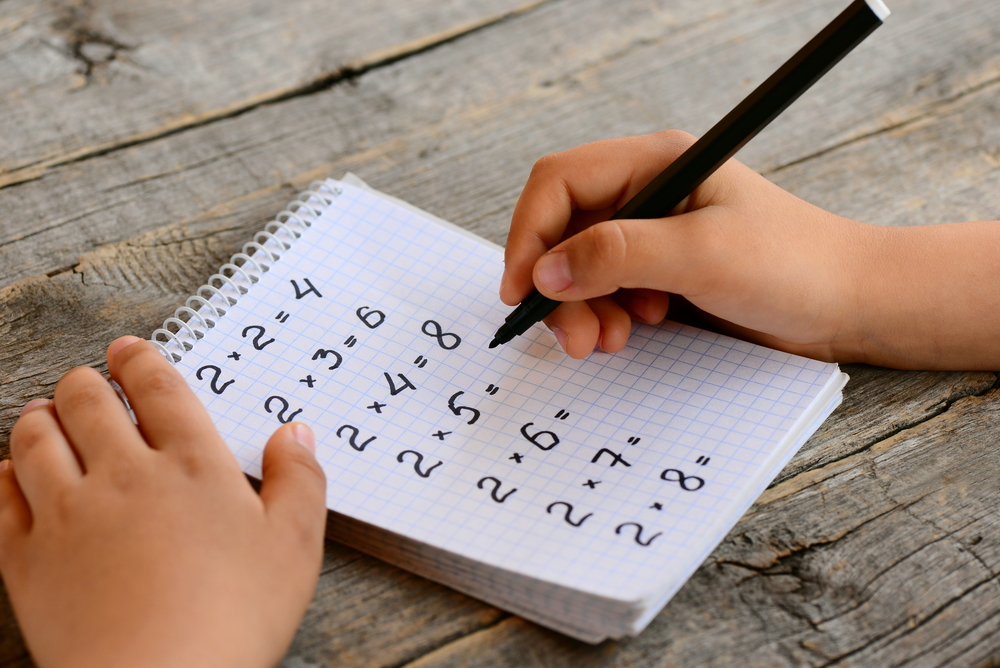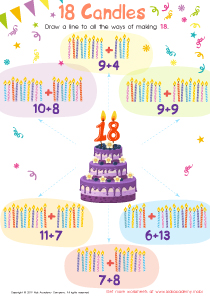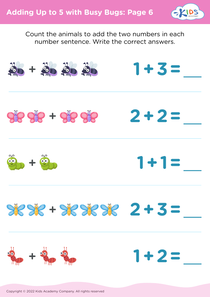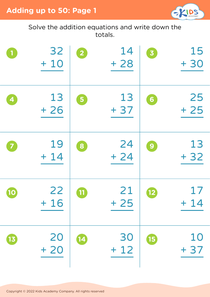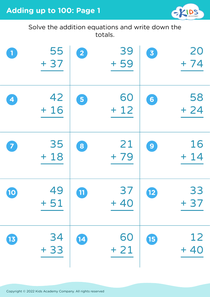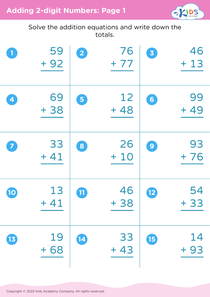Recognize shapes Adding up to 1000 Worksheets for 9-Year-Olds
4 filtered results
-
From - To
Explore our engaging "Recognize Shapes Adding up to 1000 Worksheets" designed specifically for 9-year-olds! These fun worksheets help children enhance their mathematical skills while recognizing various geometric shapes. Each activity aims to build confidence in adding numbers up to 1000, pairing shape recognition with essential math concepts. With vibrant visuals and interactive exercises, students will sharpen their understanding of shapes while tackling addition challenges. Perfect for at-home practice or classroom reinforcement, these worksheets encourage critical thinking and problem-solving. Dive into a world of shapes and numbers, and watch your child's math abilities soar!
Recognizing shapes and learning to add up to 1000 are foundational skills for 9-year-olds that play a pivotal role in their cognitive development and everyday life. Understanding shapes promotes spatial awareness and enhances problem-solving abilities. It allows children to recognize and classify objects, facilitating learning in subjects such as math, science, and art. These skills are critical not only for academic success but also for developing critical thinking.
Additionally, mastering addition skills, particularly with larger numbers like 1000, strengthens a child's arithmetic foundation. It aids in developing fluency in basic math operations, which is essential as they encounter more complex concepts in higher grades. When children learn to recognize patterns and structures in numbers, such as place value and regrouping, they become more confident in their mathematical abilities.
Moreover, integrating shape recognition and arithmetic promotes interdisciplinary learning, helping children see connections between subjects. Parents and teachers should prioritize these skills to ensure that children gain a strong footing in mathematics, fostering both academic achievement and practical life skills crucial for their future. Providing engaging activities that link these concepts can also motivate children, making learning an enjoyable experience that they will carry with them throughout their educational journey.

